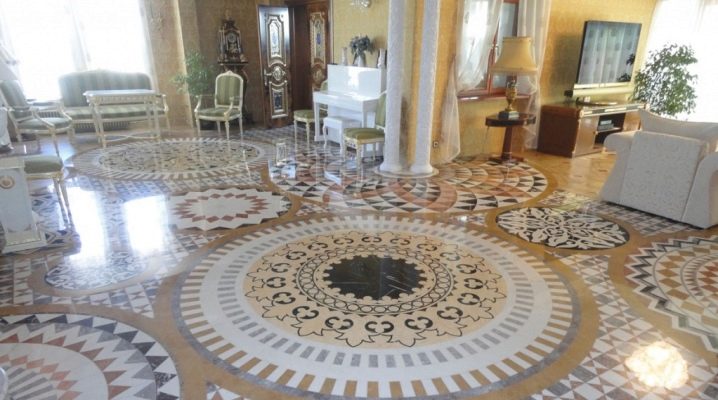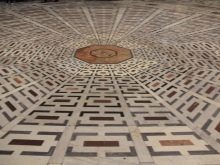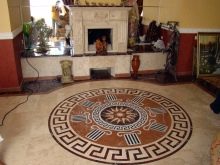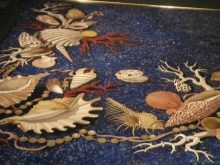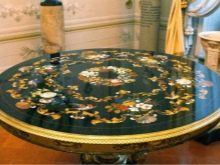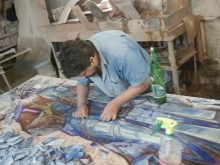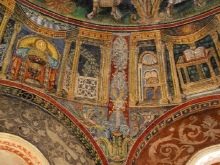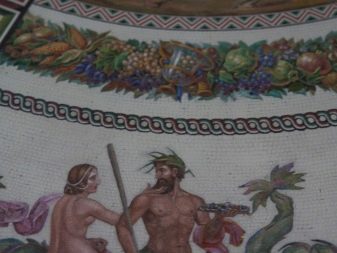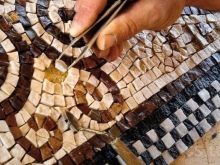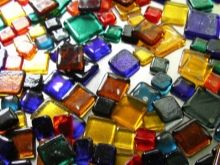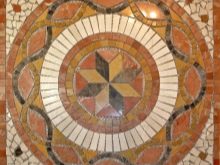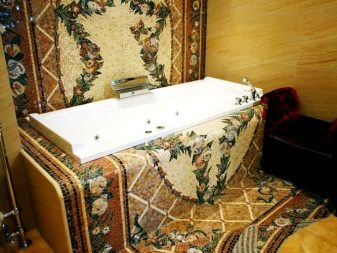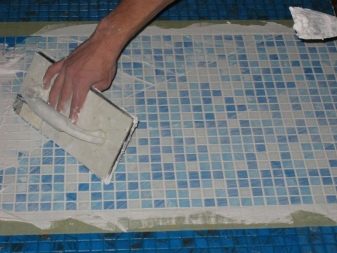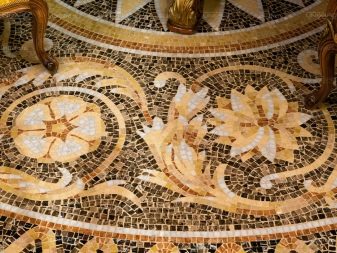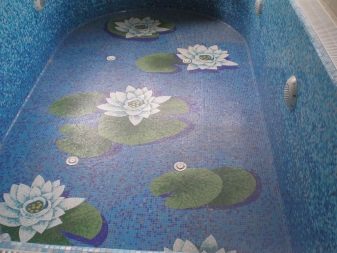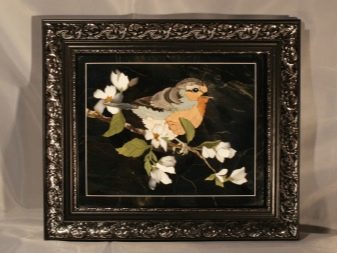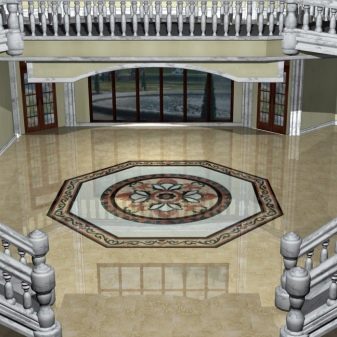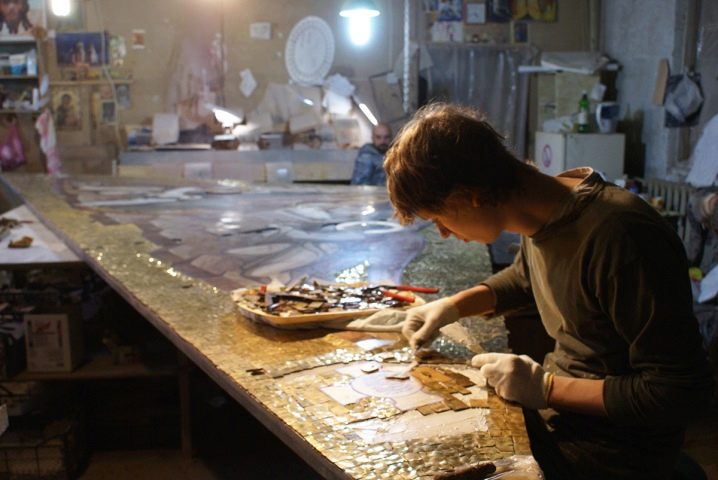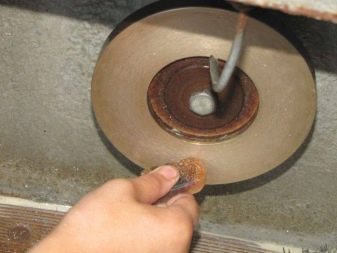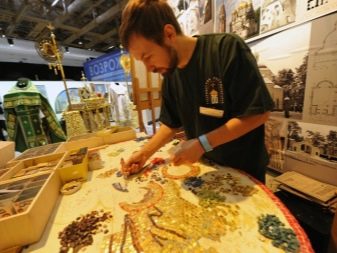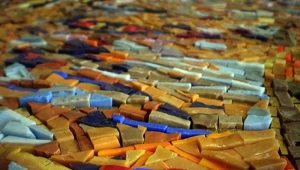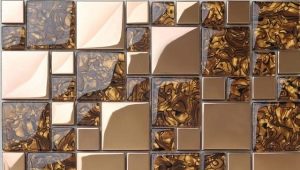Florentine mosaic in the interior
The decoration of the room with Florentine mosaic allows to realize the most unusual solutions. This is a stylish design of the room, due to the material it becomes unique.
Story
Commesso is the second name of the Florentine mosaic. This is a technique of creating paintings with thin pieces of bright colored semi-precious stones, developed in Florence at the end of the 16th century. Most common stones for its production are agate, quartz, chalcedony, jasper, granite, porphyry, lapis lazuli. The commesso design for worktops and small wall panels varies from symbolic colors to landscapes. The work is done with painstaking care and sensitivity to the artistic object.
The first recorded copy of this technique appeared at the end of the 14th century in Florence, it was located by the Duke of Medici. In the 16th century, Francesco I hired several famous Italian artists to create murals. Art began to develop rapidly.In 1588, Francesco’s successor, Ferdinando I, founded the Opificio delle Pietre Dure stone workshop as a permanent place for master classes. The first group of hired artists perfected the art of Commesso in a very illusory perspective. The workshop existed in the 17th century. It produced jewelry for family funerary chapels.
By the beginning of the 18th century, the assembly of small parts was in demand throughout Europe. Florentine artisans designed the halls of European courts. The workshop continued to work thanks to the support of the state institution in the 20th century. It created works of high technical and artistic quality in the 1920s.
Florentine mosaic art is one of the artistic conventions that flourished in Florence during the Renaissance. Its history is filled with a rich tradition of innovative environment: architecture, design, painting, sculpture. The capital of the region of Tuscany became known as the Cradle of the Renaissance. It is considered the most significant city in terms of its influence on the Italian Renaissance.
The golden age of Florentine art began at the turn of the second millennium.Florence has played an important role in the realization of the ideals of the Renaissance throughout the world because of the many talented artists. She financed and encouraged many artisans, allowing their talents to appear.
Materials
To create a mosaic initially used only precious and semiprecious stones. With the development of handicraft craftsmen have added popular and durable artificial materials. Mosaic of stones is durable, natural bright paint does not fade from sunlight. Natural stone maintains color saturation. A smooth transition of colors on the material helps the master to make a composition similar to the original picture.
Classic usage example: dark marble for background in combination with jasper, amethyst, turquoise will create the desired contrast. Elements become brighter on the black plane. Traces on stones (strokes, stains, stains) are the basis of this technique. The secret of the masters in changing the shade of the working tool is the effect of temperature. Heated marble gets delicate pink gamut, chalcedony becomes brighter after heating. For the work they select plates that mimic the foliage of the veined trees, and for the depiction of animals, a stone with a pattern of villi.
Glass
The glass surface of the panel has a smooth, integral structure. Used to decorate decorative art, designs and furniture.
Glass mosaic is usually divided into two subcategories: for the decoration of walls and ceilings, the decoration of furniture and accessories. The art form originated in the 1500s in the era of Nyaunyan. Glass mosaic is combined with precious and semiprecious stones.
Ceramics
Paintings or finishes made of ceramics have the following advantages:
- strength, hardness;
- excellent wear resistance;
- low thermal conductivity;
- corrosion resistance;
- electrical isolation;
- chemical resistance;
- excellent surface finish.
Florentine technique is often used from ceramics to create panels on the walls or floor.
The material is glossy and matte. Mirror surface used for wallsIt is recommended to lay components without gloss on the floor.
The final stage of the ceramic mosaic is the grout. Her role is to connect the elements.
Special features
The work done by the Florentine method looks flawless. Details create a smooth finish.Sized pieces of material hide seams. Grinding stones, glass, ceramics makes the surface sparkle.
Florentine mosaic is distinguished by an abundance of colors. White, black, red, emerald green, brown, yellow, blue tones allow you to create any work of art.
The materials used to perform this technique have special qualities:
- Moisture resistance. Water resistance does not allow water to pass through the panel. If moisture gets on the product, the usual sponge will cope with the task. Do not worry about the appearance of mold or corrosion. These materials are used for lining pools, they withstand the effects of water elements.
- Frost resistance. The frost resistance of the mosaic is especially important for those who are going to decorate the outer open areas on the street. Florentine styled porch, gazebos. Under the influence of snow or the weight of an ice layer, the material will remain intact.
- Uniqueness. In nature, there are no identical items. If you want to copy the composition in the style of the Florentine technique, then there will be no complete similarity. The second such pattern will not work.
- Durability. Stone, ceramics, glass retain the saturation of shades for decades. The picture painted with paints is being restored, these durable materials will show the play of colors throughout their entire life cycle.
However, works made in the Florentine version are a long and difficult work. It takes at least two months to create an exclusive canvas.. Allow this luxury in the house can people with wealth. After all, such a canvas would be expensive.
Florentine mosaic decoration is used today in the church, as well as for decorating objects in the house. Panels, similar to picturesque paintings, adorn the walls of large halls, classrooms, living rooms.
Manufacturing
The master performs hard work with great patience. Each piece of material is different in size. It is cut, shaped, subjected to mechanical stress. Then again measured and re-processed until then, until it is fully consistent with the size to connect with the adjacent part. Craftsmen often devote hours to work to get one piece of the “puzzle”.
The process of performing the technique is divided into three stages:
- material selection;
- mosaic collection (direct or reverse);
- surface polishing.
Picking up stones It is necessary to take into account the properties of the rock, because each mineral has an optical character. This is porosity, smoothness, brightness, color saturation.
To understand how the product will look after polishing, the material must be moistened with water.
In the 21st century, due to digital technology, such work can be done faster. The laser beam transfers the image from the computer without unnecessary errors and leaves the necessary margin at the edges of the element.
On the prepared items make markup and cut parts on the machine. The thickness of the finished plates reaches 2-3 mm. Refinement of parts occurs on the machine for grinding parts. Reverse method for assembling paintings - laying elements face down using stencils. The assembled base is fixed with glue from the seamy side. This method is used for bulk work. The final touch is the grinding of the finished surface.
The method of direct image acquisition is the laying of parts on objects (tabletop, chest, casket). Skilled masters make laying of fragments by means of the fixing layer. All laid elements on the surface are treated with polishing paste. Polishing choose different depending on the working material. The final finish shows shine, play of shades on the artistic composition.
Florentine mosaic in the interior is used by people with high status. This design can be found in the decoration of the bathroom, swimming pool and household items, it emphasizes the presence of taste.
For more information about the Florentine mosaic, see the following video.
